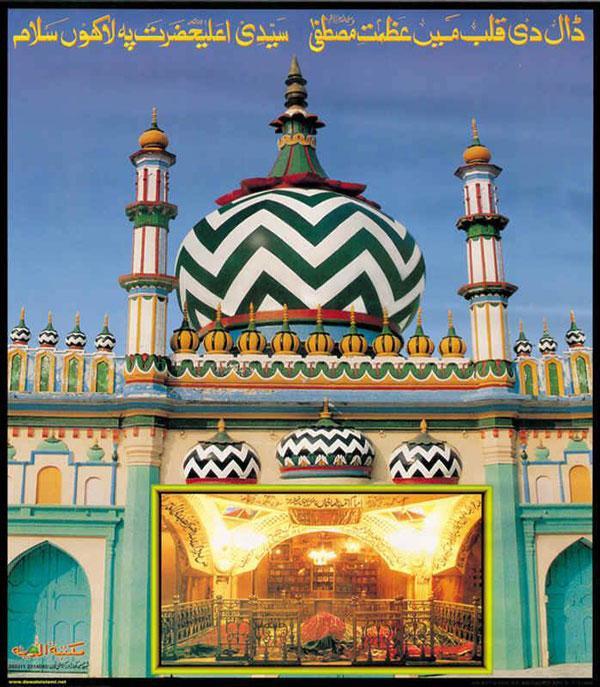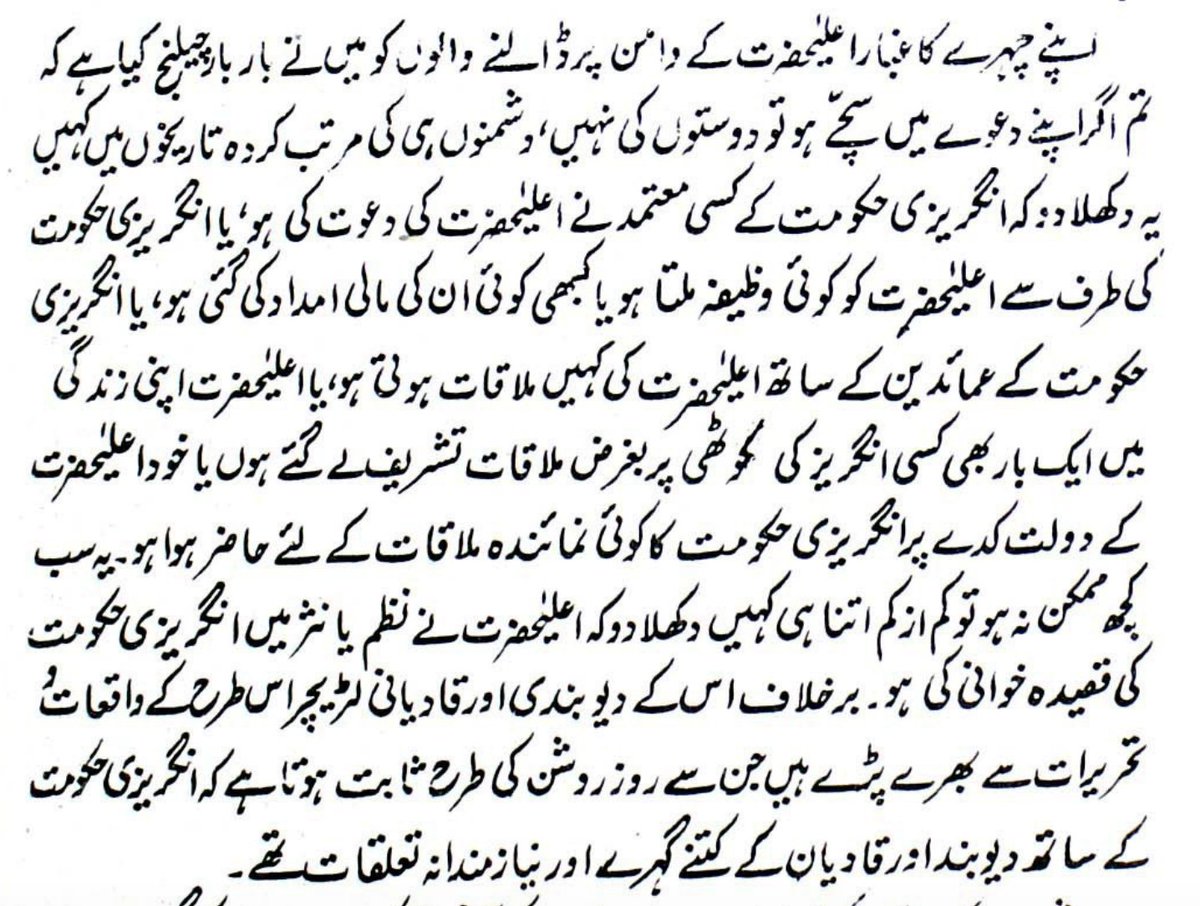
BIG BREASTED COMPANIONS?
This is a common claim made by the enemies of Allāh and His Rasūl ﷺ. However, let us investigate the reality of this claim by perusing the books of lexicon and Tafsīr.
The verse that they use for this is:
وَكَوَاعِبَ أَتْرَاباً
This is a common claim made by the enemies of Allāh and His Rasūl ﷺ. However, let us investigate the reality of this claim by perusing the books of lexicon and Tafsīr.
The verse that they use for this is:
وَكَوَاعِبَ أَتْرَاباً
https://twitter.com/ExmuslimsOrg/status/1322908782838599683

The word کواعب, Kawāíb, is the plural of کاعب, Kāíb.
Let us first take a look at how this word is defined by the lexicographers.
Abu’l Ĥusayn Aĥmad ibn Fāris ibn Zakariyyah al-Qazwīnī al-Rāzī [329-395 AH / 941-1004 CE] writes in Maqāyīs al-Lughah:
“Káb is a sound root that
Let us first take a look at how this word is defined by the lexicographers.
Abu’l Ĥusayn Aĥmad ibn Fāris ibn Zakariyyah al-Qazwīnī al-Rāzī [329-395 AH / 941-1004 CE] writes in Maqāyīs al-Lughah:
“Káb is a sound root that

indicates protrusion and rising in something. From the same root comes the word Kaáb: the ankle of a man, which is the bone on the two sides of the lower leg where it meets the foot. And the word Kaábah: House of Allāh táālā, it is said it is named this because of its prominence
and its quadrangular shape...A woman is Kāíb when her breasts protrude.”
Abu’l Fađl Jamāl al-Dīn Muĥammad ibn Mukarram ibn Álī ibn Ahmad ibn Manżūr [630-711 AH / 1232-1311 CE] writes in Lisān al-Árab:
“Kaábat al-Jariyah: Her breasts became protuberant.”
Abu’l Fađl Jamāl al-Dīn Muĥammad ibn Mukarram ibn Álī ibn Ahmad ibn Manżūr [630-711 AH / 1232-1311 CE] writes in Lisān al-Árab:
“Kaábat al-Jariyah: Her breasts became protuberant.”

Thus we see that a Kāíb is not a woman with big breasts, but rather it refers to a young woman, whose breasts have become visible.
It is therefore not a reference to the large size of her breasts, but merely a reference to their presence.
It is therefore not a reference to the large size of her breasts, but merely a reference to their presence.
Edward William Lane [1801-1876 CE] also makes this clear in his lexicon; we see no mention of the size of the breasts, but simply that of their development and appearance. 

Now, let us take a look at the books of Tafsīr to see if such a meaning can be gathered.
Imām Muĥammad ibn Jarīr al-Ţabarī [224-310 AH / 839-923 CE] writes in his Tafsīr of this verse:
“It is said, Nāhids [those with protuberant breasts] of a single age.”
He then narrates this
Imām Muĥammad ibn Jarīr al-Ţabarī [224-310 AH / 839-923 CE] writes in his Tafsīr of this verse:
“It is said, Nāhids [those with protuberant breasts] of a single age.”
He then narrates this

understanding from the Salaf:
“From Ibn Ábbās, His statement ‘And Kawāíb’, it is said, ‘Nawāhid [plural of Nāhid].’”
“From Qatādah regarding His statement, ‘And Kawāíb of equal age’, he said, ‘Nawāhid’”
“Ibn Zayd said, regarding His statement, ‘And Kawāíb of equal age’,


“From Ibn Ábbās, His statement ‘And Kawāíb’, it is said, ‘Nawāhid [plural of Nāhid].’”
“From Qatādah regarding His statement, ‘And Kawāíb of equal age’, he said, ‘Nawāhid’”
“Ibn Zayd said, regarding His statement, ‘And Kawāíb of equal age’,



he said, ‘Kawāíb are the one whose breasts have become protuberant, full and round.’”
Imām Abū Mansūr al-Māturīdī al-Samarqandī al-Ĥanafī [d. 333 AH / 944 CE] writes in his Tafsīr:
“{And Kawāíb of equal age} it is said, Kāíb is the one whose breasts have


Imām Abū Mansūr al-Māturīdī al-Samarqandī al-Ĥanafī [d. 333 AH / 944 CE] writes in his Tafsīr:
“{And Kawāíb of equal age} it is said, Kāíb is the one whose breasts have



become full and round, and that is when she reaches the age at which she menstruates, and she is a Nāhid, and she is the most desirable to men.”
Abu’l Layth Naşr ibn Muĥammad ibn Aĥmad ibn Ibrāhīm al-Samarqandī al-Ĥanafī [d. 375 AH / 985 CE] writes in his Tafsīr Baĥr al-Úlūm:
“{And Kawāíb of equal age} and Kawāíb are young women with round breasts.”

“{And Kawāíb of equal age} and Kawāíb are young women with round breasts.”


Imām Ĥusayn ibn Masúūd al-Baghawī [d. 516 AH / 1122 CE] writes in his Tafsīr Máālim al-Tanzīl:
“{And Kawāíb} young women who are Nāhids, whose breasts have become full and round.”

“{And Kawāíb} young women who are Nāhids, whose breasts have become full and round.”


Imām Fakhruddīn Muĥammad ibn Úmar al-Shāfiýī al-Rāzī [544-606 AH / 1150-1210 CE] writes in Mafātīĥ al-Ghayb:
“Kawāíb is plural of Kāíb, and that is the Nāhids, those whose breasts have become full and have become round, that is, that the breasts are, in their

“Kawāíb is plural of Kāíb, and that is the Nāhids, those whose breasts have become full and have become round, that is, that the breasts are, in their


protuberance, like the ankle and the whirl of the spindle.”
Imām Abū Saýīd al-Bayđāwī [d. 685 AH / 1286 CE] writes in his Tafsīr:
“{And Kawāíb} women whose breasts have become round.”

Imām Abū Saýīd al-Bayđāwī [d. 685 AH / 1286 CE] writes in his Tafsīr:
“{And Kawāíb} women whose breasts have become round.”


Imām Abu’l Barakāt Ĥāfiżuddīn Ábdullāh ibn Aĥmad al-Nasafī al-Ĥanafī [d. 710 AH / 1310 CE] writes in his Tafsīr Madārik al-Tanzīl:
“{And Kawāíb} Nāhids [those whose breasts are protuberant].”

“{And Kawāíb} Nāhids [those whose breasts are protuberant].”


Imām Álī ibn Muĥammad al-Khāzin [d. 725 AH / 1325] writes in his Tafsīr Lubāb al-Tā’wīl:
“{And Kawāíb} plural of Kāíb, that is, young women who are Nāhids, whose breasts have become full and round.”

“{And Kawāíb} plural of Kāíb, that is, young women who are Nāhids, whose breasts have become full and round.”


Shaykh al-Islām Abu’s Súūd Muĥammad ibn Muĥiyuddīn Muĥammad al-Ímādī al-Ĥanafī [d. 982 AH / 1574 CE] writes in his Tafsīr Irshād al-Áql al-Salīm:
“{And Kawāíb} that is, women whose breasts have become round, and they are Nāhids.”

“{And Kawāíb} that is, women whose breasts have become round, and they are Nāhids.”


Mawlānā Ismāýīl Ĥaqqī ibn Muşţafā al-Bursāwī al-Ĥanafī [1063-1127 AH / 1653-1725 CE] writes in his Tafsīr Rūĥ al-Bayān:
“{And Kawāíb} is plural of Kāíb, it is said, the woman's breasts became round, her breasts become visible and protrude, as the protruding of the ankle, that is
“{And Kawāíb} is plural of Kāíb, it is said, the woman's breasts became round, her breasts become visible and protrude, as the protruding of the ankle, that is

virgin women. Their breasts have become round, that is, they have become round and become like the ankle in terms of protuberance. It is said, the breasts of the young woman have become round, that is, become round like the whirl of the spindle, and they are called Nawāhid,
plural of Nāhid and Nāhidah, and she is the woman whose breasts have become full and round, and appear to protrude.”
It is observed from numerous books of Tafsīr that such a meaning is not found, rather it is explained to be the roundness and protrusion of their breasts as an
It is observed from numerous books of Tafsīr that such a meaning is not found, rather it is explained to be the roundness and protrusion of their breasts as an
expression of their youth. It does not mention the size of their beasts being large, and such a meaning has no precedence in the classical texts. In fact, not even a single English translation contains the words "big-breasted", this is nothing but a lie from the apostates.
Whilst some translations may give this impression, none say this outright, and the one that we have found to be most concurrent with the Tafsīrs is the Urdu translation Kanz al-Īmān by Alahazrat Imām Aĥmad Riđā Khān al-Ĥanafī al-Baraylawī [1272-1340 AH / 1856-1921 CE].
His translation of the verse is:
“Females with protruding breasts, of a single age.”
This is the correct translation of the verse and makes clear that it is unrelated to size or largeness, but rather about the presence of prominent breasts that indicate their youth.
“Females with protruding breasts, of a single age.”
This is the correct translation of the verse and makes clear that it is unrelated to size or largeness, but rather about the presence of prominent breasts that indicate their youth.

We challenge the apostates to prove that this verse refers to them as big-breasted, we say bring forth a single quote from a classical scholar, but they shall not be able to do so, as they do not care for the truth, but only for what is convenient to them.
• • •
Missing some Tweet in this thread? You can try to
force a refresh






















